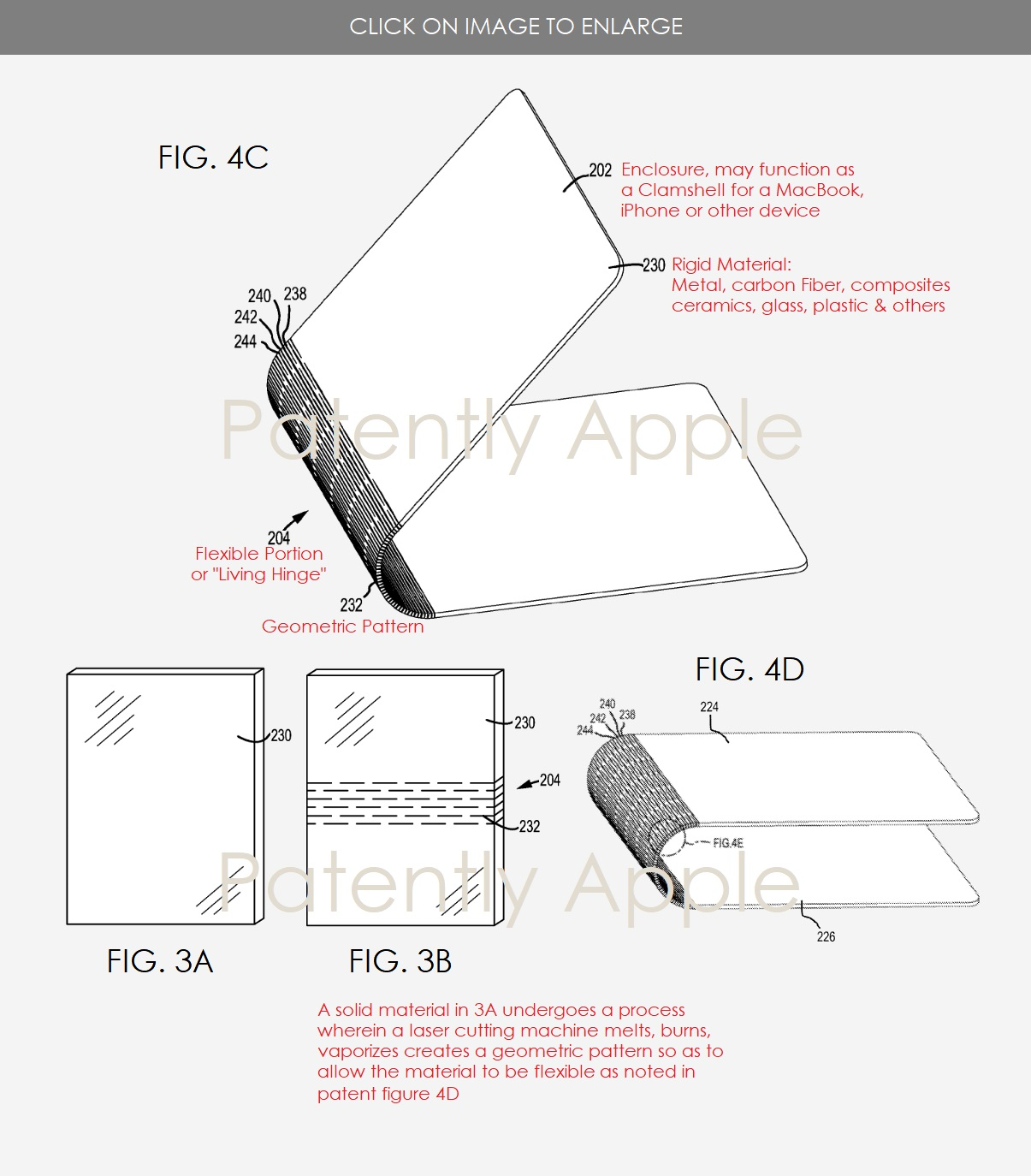Will Apple Macbook “Project Star” feature a flexible hinge a-la Microsoft Surface Book?

Lots has been said about the still rumored Project Star laptop, with evolving theories in regard to its features.
Word has it that the new Macbook will not run Mac OS, but rather a derivative version of iOS, and its screen will be touch-enabled, just like an iPad, but with a few extra perks, such as water resistance, and the built-in keyboard that would make it an actual laptop.
Most recently, however, Apple has secured a patent that will allow the tech giant to experiment with a chassis design that might bring it closer to Microsoft Surface Book, called “Living Hinge”.
As you would imagine, the Living Hinge looks and works in the same exact way as Microsoft’s design, which means that it connects the keyboard and base of the laptop to the screen, using a flexible mechanism. It’s unclear whether this mechanism will also include a method of detaching the screen from the keyboard, which would be highly unlikely.
The fundamental difference between the Living Hinge and Microsoft’s Dynamic Fulcrum Hinge is that Apple’s design will be manufactured from one single piece of flexible aluminum, instead of being broken into separate interconnected sections.
This design will allow to build a laptop with a unique design, while still retaining the ability to repel liquids and dust.
A water-resistant Living Hinge makes perfect sense as a feature of Apple Project Star, in that the laptop will most likely be water resistant.
The patent itself, the details of which can be viewed on Patently Apple, does not go as far as explicitly say that the design is meant to be integrated into MacBooks, in fact, at least one of the drawings included, describes it as a possible clamshell enclosure for a MacBook.
On the other hand, patents are rarely consistent with their suggested use in actual products, with some exceptions, such as the Apple Pencil, where a design is extremely specific.
Just because Apple describes this design as a possible application for a clamshell enclosure, it does not precludes the company from using the Living Hinge as integral part of future MacBooks, or other devices.
The suggested method of making the hinge flexible from a single piece of aluminum, is described in item 232 of Figure 4C, where the caption reads:
“A solid material in 3A undergoes a process wherein a laser cutting machine melts, burns, vaporizes, creates a geometric pattern so as to allow the material to be flexible as noted in patent figure 4D.”
Project Star has been attracting attention by tech circles interested in learning more about the future of Apple devices, especially whether or not Apple is moving forward onto creating its own ARM processor for its Macs. This has also fueled a theory that Project Star may be merely a test-bed for future technologies and designs, which may never reach mass production, in lieu of laptops and mobile devices that may benefit from the innovation that Project Star may bring.